Have you ever considered how a simple invention like the wheelchair may empower people with impaired mobility? It offers freedom, independence, and a way to travel the world easily. These technologies, which range from straightforward hand-driven wheelchairs to intricate motorized versions, have evolved to fulfill various demands.
For optimal comfort and functionality, contemporary wheelchairs incorporate adjustable features, advanced components, and ergonomic designs. They have developed into symbols of openness and inclusivity, enabling people to follow their passions, explore new horizons, and move against all obstacles.
Contents
Types of Wheelchairs
Wheelchairs come in various styles to satisfy the specific needs and preferences of individual people. These mobility aids range from manually powered wheelchairs to motorized electric wheelchairs.
Let’s now delve more into the three primary categories of wheelchairs:
1. Manual Wheelchair
The ability to operate a manual wheelchair depends on the user’s physical stamina and hand-eye coordination. The operator propels it typically with the help of hand rims fastened to the wheels, which have two large rear wheels. Front casters offer maneuverability and stability.
Manual wheelchairs are perfect for use inside and outside because they are lightweight, portable, and compact. They come in various shapes and sizes to match multiple body types and preferences and provide a helpful alternative for persons with limited movement. Users with manual wheelchairs gain autonomy, control, and the ability to navigate their surroundings efficiently.
2. Power Wheelchair
An electric wheelchair or power wheelchair is motorized mobility assistance designed for people with limited physical strength. In contrast to manual wheelchairs, power wheelchairs are operated by a joystick or other gadgets. They don’t require any muscular effort to move because they have electric motors for propulsion.
Power wheelchairs give riders more mobility and independence, allowing them to travel more easily over varied terrain and greater distances. They frequently have extra capabilities, including tilt-in-space chairs, reclining options, and programmable settings for maximum comfort. Power wheelchairs are helpful for anyone looking to improve their mobility and quality of life.
3. Transport Wheelchair
A transport wheelchair, often called a companion wheelchair, is a portable mobility aid light enough for a friend or carer to carry. Instead of wheelchairs that can move themselves, transport wheelchairs are made to be pushed by another person. Since they are not designed for independent propulsion, they frequently feature smaller rear wheels and no hand rims.
Mobility and portability are prioritized in transport wheelchairs, which include collapsible frames and detachable footrests. For people with restricted mobility who need assistance from a carer or partner, they are a convenient alternative for quick journeys, doctor’s visits, or inside use.
Check the transport chair vs wheelchair comparison.
Accessories of Wheel Chairs
Following are the accessories available with wheelchairs:
- Wheelchair cushions: These cushioned seats offer comfort and pressure reduction for prolonged use.
- Wheelchair Bags: Wheelchair storage bags can be attached to carry personal goods, possessions, or medical supplies.
- Wheelchair ramps: Portable ramps for navigating barriers and gaining access to higher ground.
- Wheelchair seat belts: Ensure user security and stable seated positioning.
- Wheelchair trays: Foldable or removable trays used for eating, reading, or completing other tasks.
- Wheelchair locks and brakes: These devices keep the wheelchair in position and stop unintentional movement.
- Wheelchair Cup Holders: Practical holders to keep drinks close at hand.
- Wheelchair Gloves: These improved-grip gloves are designed for wheelchair users who propel themselves.
- Wheelchair Lights: Attachable lights for increased safety and visibility in dimly lit areas.
- Wheelchair umbrellas: Attachable umbrellas that offer cover from the sun and weather.
Wheelchairs Under Manual
Following are the types of manual wheelchairs:
Self-Propelled Wheelchairs
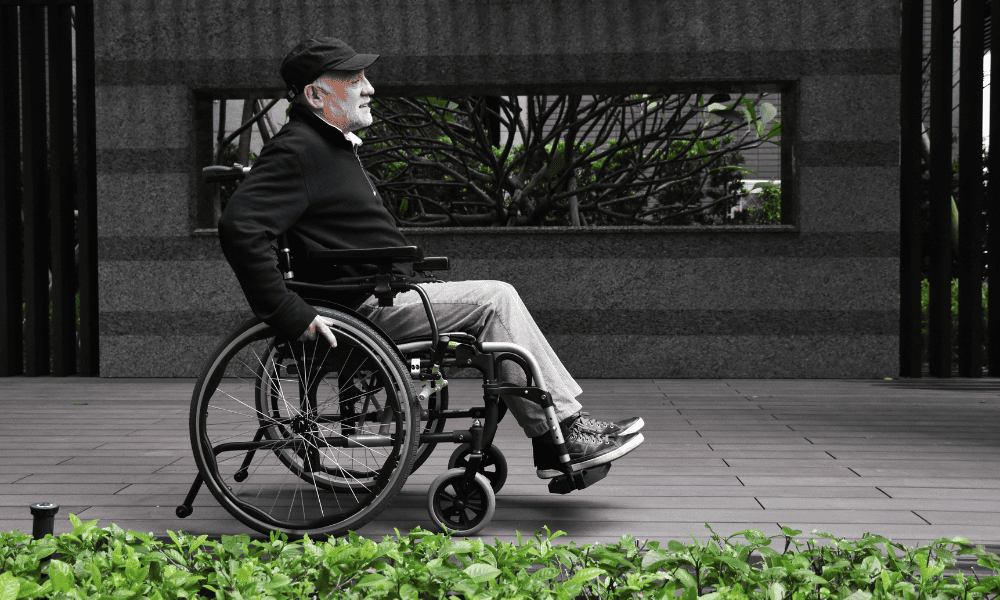
Wheelchairs that can be propelled by one’s upper body power and coordination are known as self-propelled wheelchairs.
- Enhanced Mobility and Independence: Large rear wheels with hand rims on these wheelchairs enable users to maneuver and move independently. Self-propelled wheelchairs give users a sense of independence and freedom, making it easier to move across different terrains and carry out everyday tasks.
- Customizable Portability and Configuration: Because they are frequently portable and programmable, users can discover the ideal fit and configuration for their unique requirements and preferences.
Foot-Propelled Wheelchairs
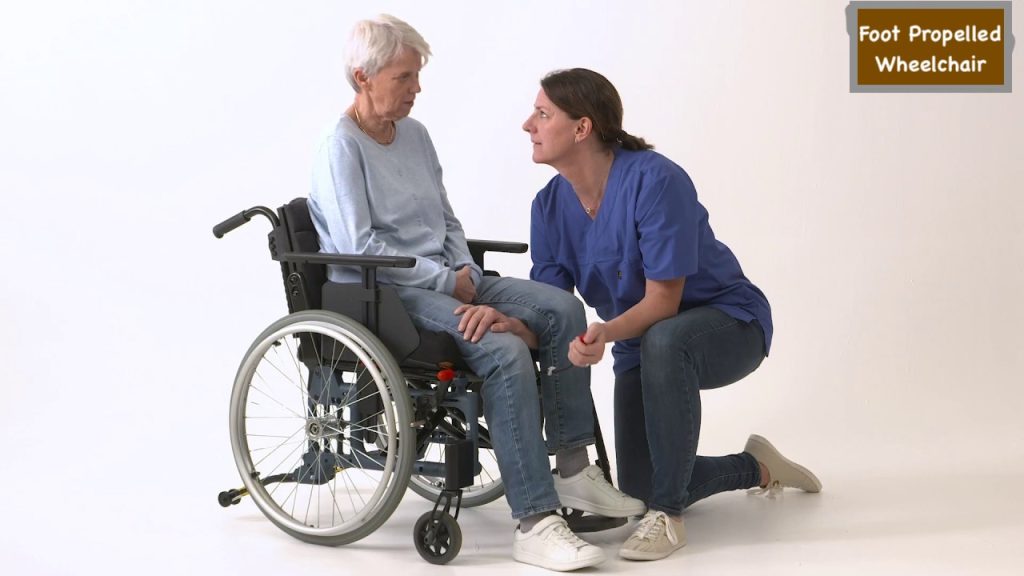
Foot-propelled wheelchairs, commonly called footrest wheelchairs, are intended for those with lower body function but limited or no use of their upper body.
- Unique design: These wheelchairs have an unusual design that enables users to go forward using their feet thanks to high footrests.
- Enhanced mobility: For people with special mobility issues, foot-propelled wheelchairs offer an alternate mobility solution that provides freedom and independence of movement.
- Customizable comfort: They frequently have adjustable features and supporting footrests to ensure stability and ease during propulsion.
Tilt-in-Space Wheelchairs
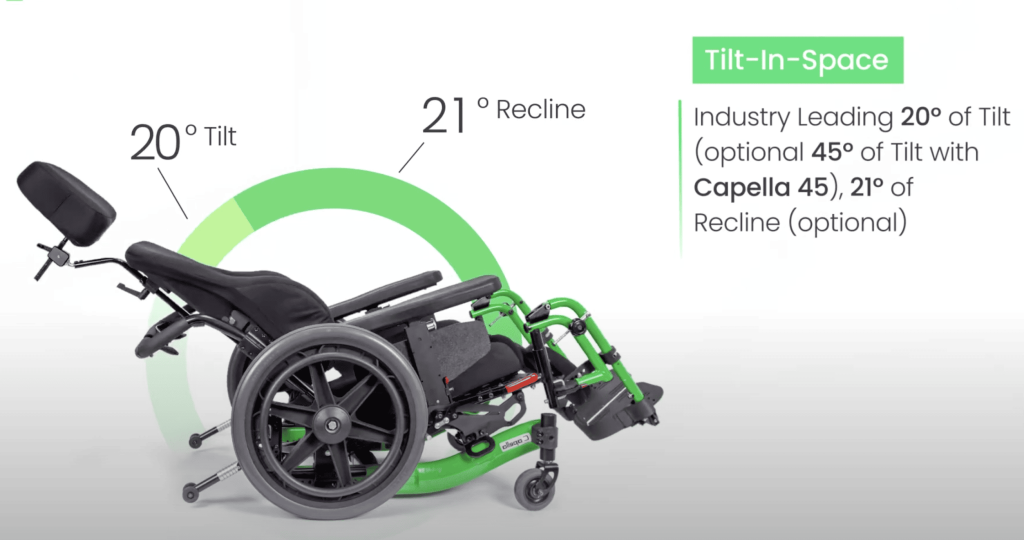
To maintain a constant angle between the seat and backrest, users of tilt-in-space wheelchairs can jointly modify the tilt angle of the seat and backrest.
- Enhanced well-being: Improved alignment, pressure alleviation, and postural support are all provided by this function.
- Optimal Comfort and Therapeutic Benefits: People who frequently need to be repositioned, have pressure points that need to be redistributed, or have certain medical conditions that call for maintaining a particular posture or alignment for therapeutic purposes benefit the most from tilt-in-space wheelchairs.
Lightweight Wheelchair
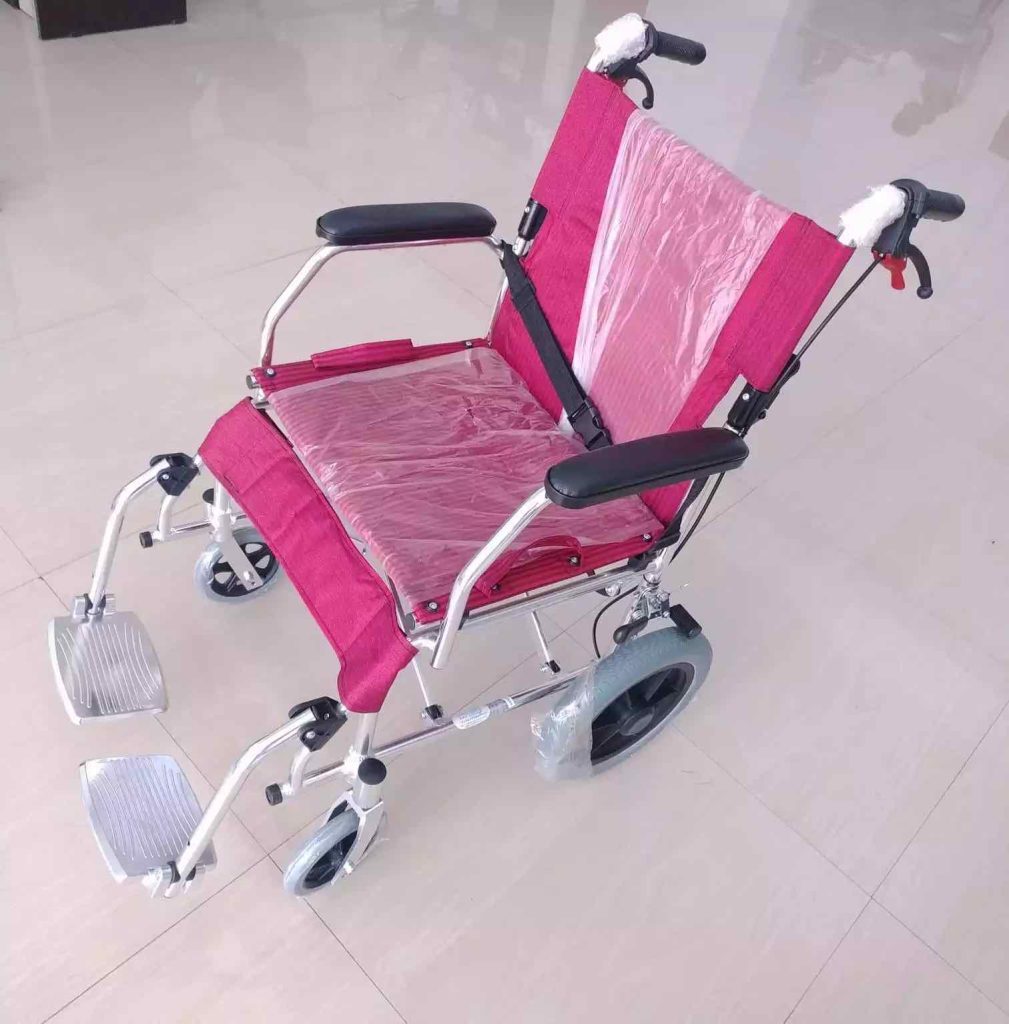
Lightweight wheelchairs were created to reduce weight for better portability and maneuverability.
- Greater convenience: These wheelchairs are lighter to push and transport since they are made of lightweight materials like aluminum or carbon fiber.
- Versatile Mobility Solutions: Lightweight wheelchairs have many advantages, including ease of use, ease of carers, and more independence for users. They are ideal for those who require everyday wheelchair use and seek a more adaptable and valuable mobility alternative.
Standard-Weight Wheelchairs
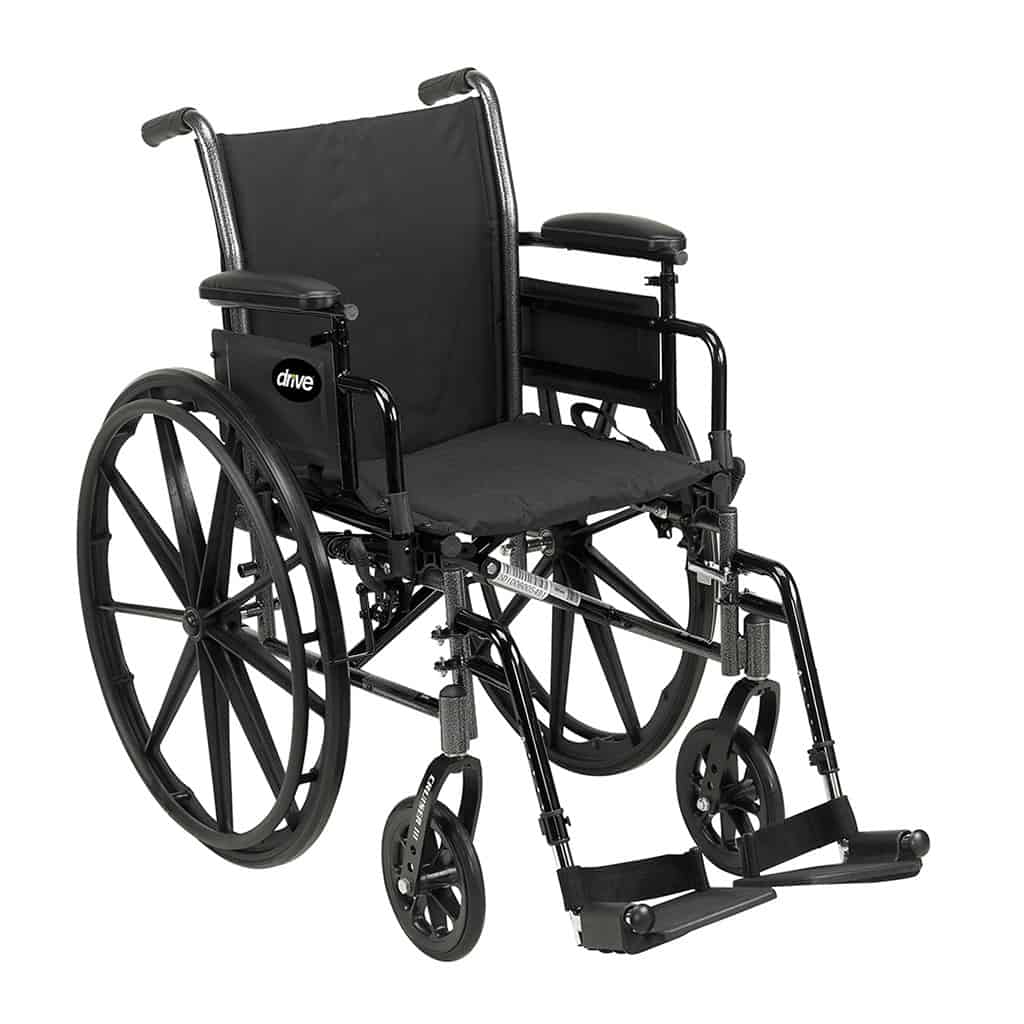
Standard-weight wheelchairs provide a balance between robustness and maneuverability.
- Durable Construction: They are made of hard materials, giving users stability and support. Standard-weight wheelchairs offer dependability and durability, making them appropriate for daily use even though they may not be as light as specialized types.
- Comfortable and Versatile: These wheelchairs offer a cozy and practical mobility option and can fit various people.
Reclining Back Wheelchairs
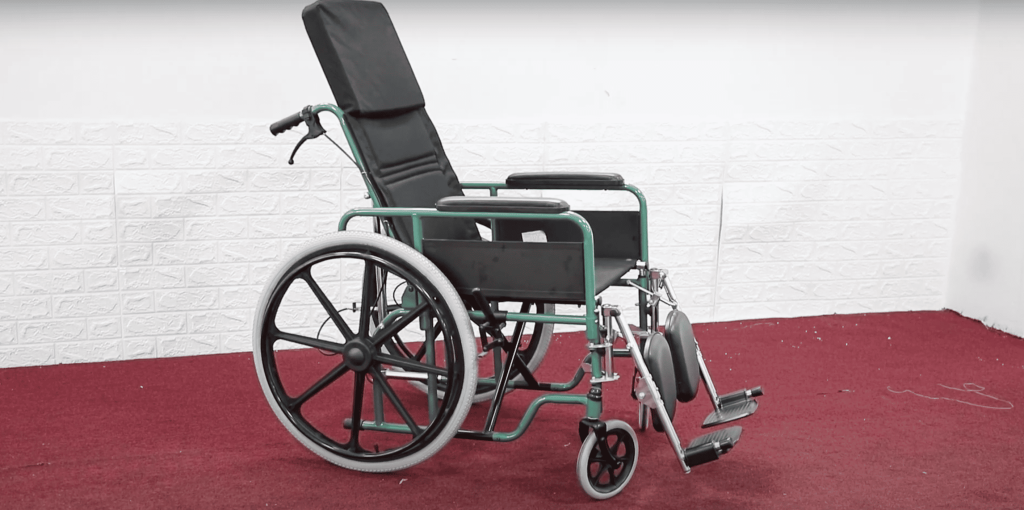
Users of wheelchairs with reclining backs can change the backrest’s angle for more comfort and positioning possibilities.
- Customizable Relaxation: The backrest of these wheelchairs often has a mechanism that allows it to recline backward, providing a variety of reclining positions to meet personal preferences and therapeutic requirements.
- Enhanced Comfort and Support: Users needing regular position changes, pressure relief, or reclining for comfort or medical reasons will find the reclining back feature especially helpful. It gives those who spend much time in wheelchairs more flexibility and support.
Heavy-Duty Wheelchairs
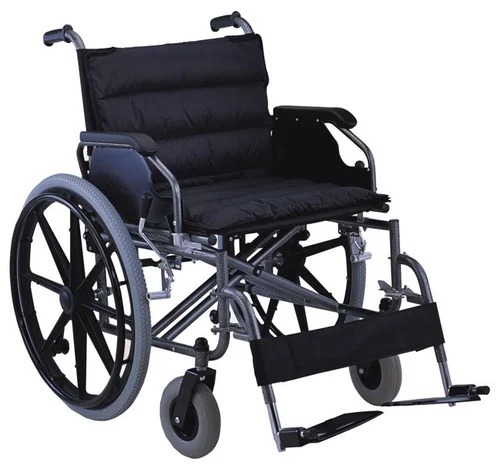
Heavy-duty wheelchairs have increased strength, durability, and stability, making them ideal for people who weigh more or need more support.
- Inclusive Design for Enhanced Comfort: To comfortably fit huge people, these wheelchairs include strengthened frames, greater seat widths, and durable components.
- Dependable Durability for Heavy-Duty Use: Wheelchairs designed for heavy-duty use have higher weight capacities, better stability, and robust construction to handle the demands of regular use. They are designed to offer dependable and secure movement for anyone who must meet certain weight and size limitations.
Rigid Ultra Lightweight
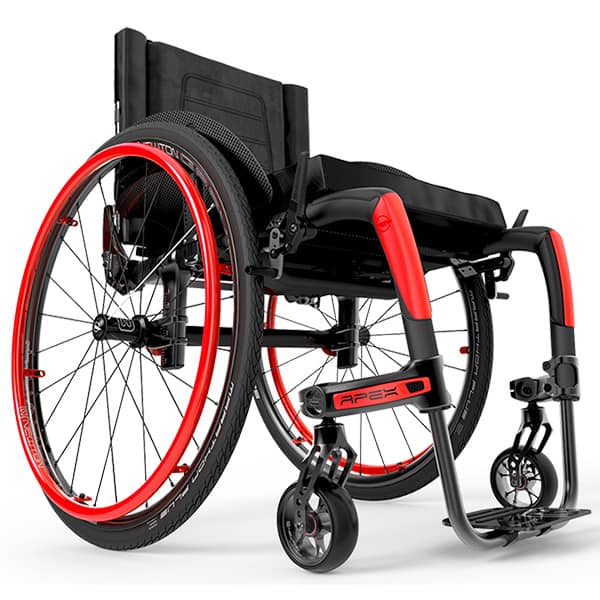
Mobility aids are recognized for their lightweight construction, remarkable maneuverability, and simple designs, including rigid ultra-lightweight wheelchairs.
- Lightweight Strength and Performance: These wheelchairs have stiff frames made of materials like titanium or carbon fiber, which boost their strength while reducing weight.
- Enhanced Performance and Independence: Active users who value agility, independence, and customization possibilities favor rigid ultra-lightweight wheelchairs because they offer higher responsiveness, improved energy economy, and enhanced performance.
Sport Wheelchair
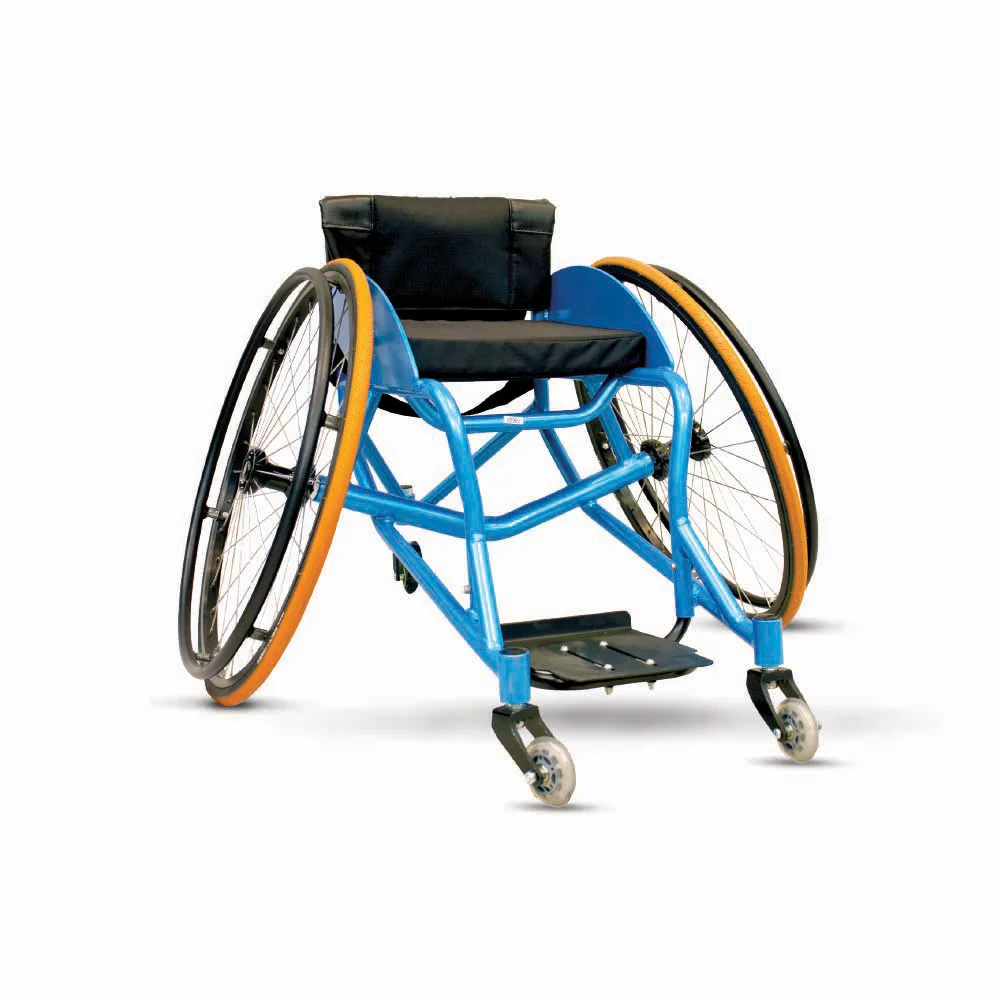
Sport wheelchairs are specialized mobility aids made for use during athletic events.
Athletic Potential: They provide improved maneuverability, stability, and performance qualities to accommodate a variety of sports, including basketball, tennis, and racing.
There are three types:
- Tennis Wheelchair: A tennis wheelchair is a specialized sports wheelchair created especially for wheelchair tennis. It has a lightweight frame, big rear wheels, and a reduced seat position to give stability, agility, and the best possible maneuverability on the tennis court.
- Rugby Wheelchair: A rugby wheelchair is a specialized sports wheelchair made for wheelchair rugby. It is also known as a wheelchair rugby chair or a murderball chair. These chairs have bumper bars, strengthened frames, and slanted wheels to promote stability and maneuverability on the court while still coping with the physical demands of the sport.
- Basketball Wheelchair: A wheelchair made exclusively for wheelchair basketball is known as a basketball wheelchair. It has a light frame, inclined wheels for enhanced maneuverability, and a lowered sitting position to improve stability and agility when playing.
Beach Wheelchairs
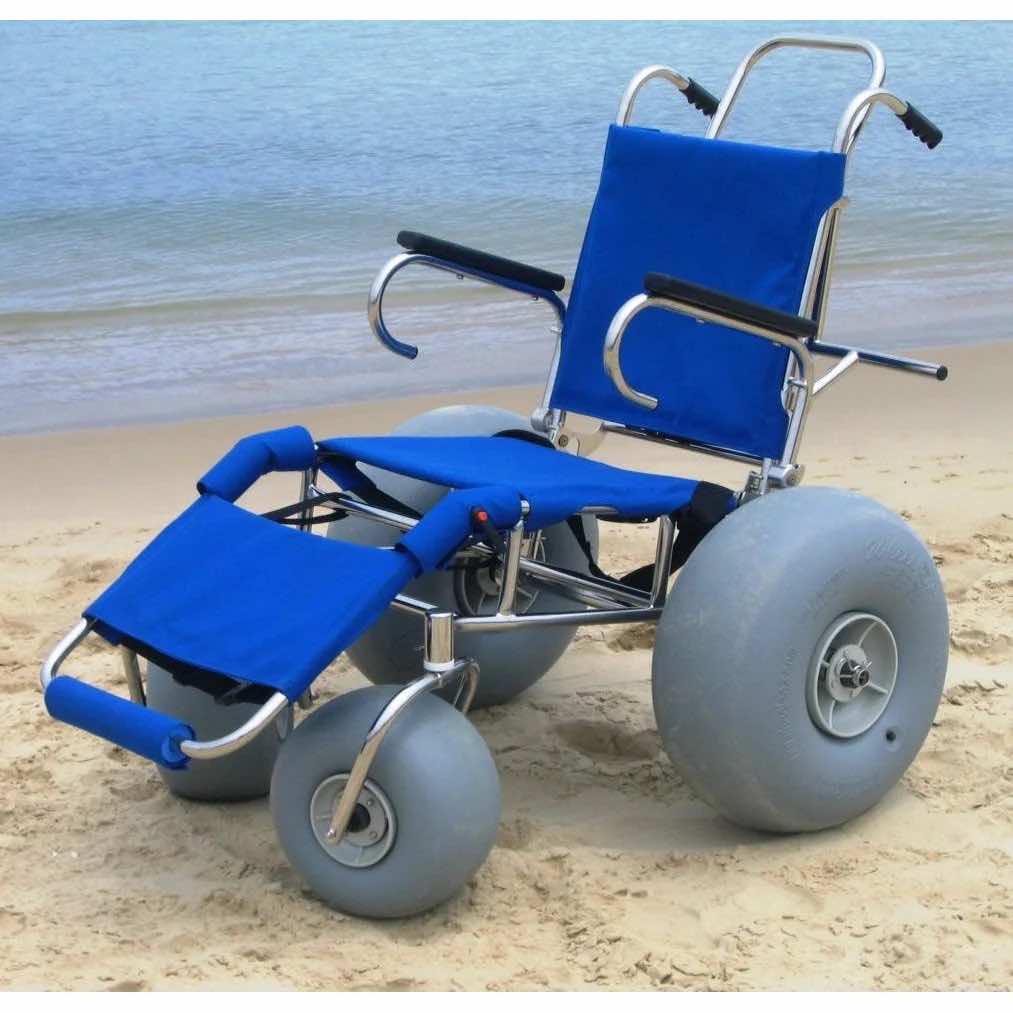
With the help of a beach wheelchair, people with mobility impairments can access and take advantage of beach surroundings by navigating sand and uneven ground.
- Sturdy materials: These wheelchairs often have broader balloon tires, strong frames, and corrosion-resistant materials to handle the difficulties of sandy ground.
- Embracing Beach Accessibility: They allow people to enjoy the outdoors, participate in beach activities, and experience the beach with greater simplicity and accessibility.
Check beach wheelchair rentals.
Pediatrics Wheelchairs
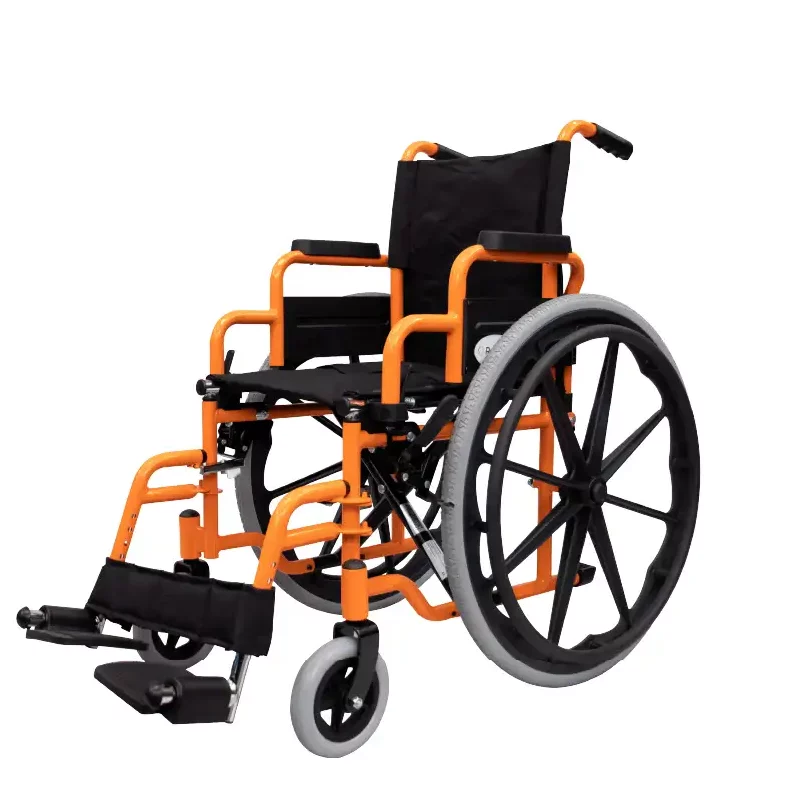
A pediatric wheelchair is designed to cater to the unique requirements of young children with mobility issues.
- Growth and Development Support: These wheelchairs come in various shapes and sizes to meet children’s growth and development.
- Mobility and Engagement: They come with movable parts, unique seating options, and vivid designs to offer young users comfort, support, and independence to participate in daily activities and interact with their peers.
Bathroom Wheelchairs
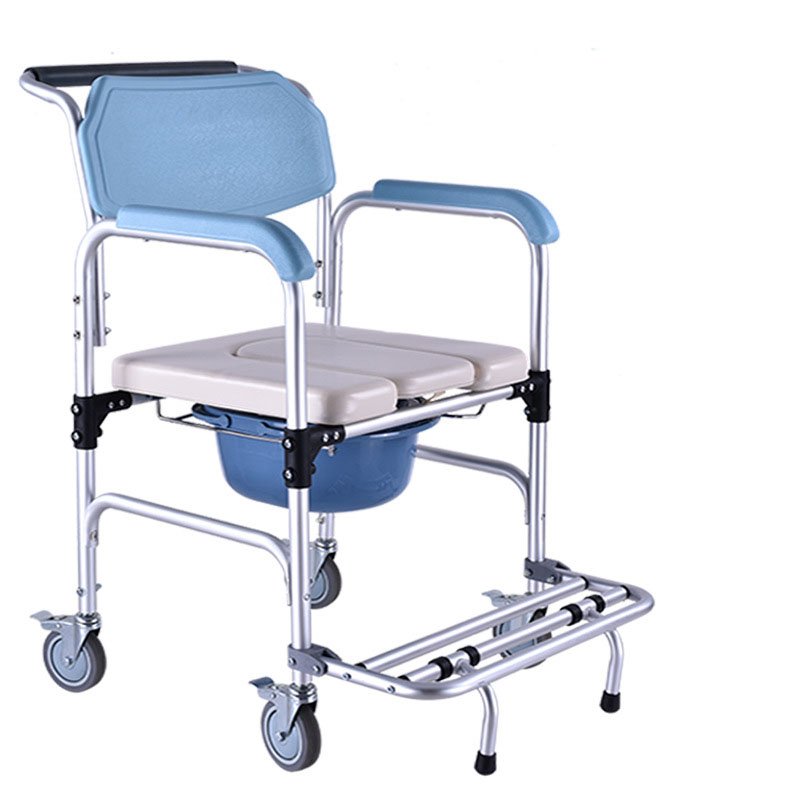
A wheelchair made expressly for use in bathrooms is called a bathroom wheelchair, also known as a shower wheelchair or commode wheelchair.
- Adaptability and Convenience: These wheelchairs offer characteristics like rust-resistant frames and detachable armrests for simple maneuverability in small areas. They are made of waterproof materials.
- Accessibility and Safety: They enable people with mobility issues to access showers, use restrooms, and traverse toilets securely and comfortably, giving them more freedom and accessibility.
Commercial Use Wheelchairs
A wheelchair intended for commercial usage is made for use in public spaces like hospitals, malls, and airports, where people who need mobility assistance can use it.
- Easy Storage and Transport: The foldable design of commercial-use wheelchairs allows for effortless storage and convenient transportation, making them versatile and practical for various settings and spaces.
- Inclusivity and Convenience: To provide dependable and accessible transportation inside commercial spaces and to promote inclusivity and convenience for all visitors, these wheelchairs are typically robust, simple to maneuver, and fitted with safety elements.
Stair Climbing Wheelchairs
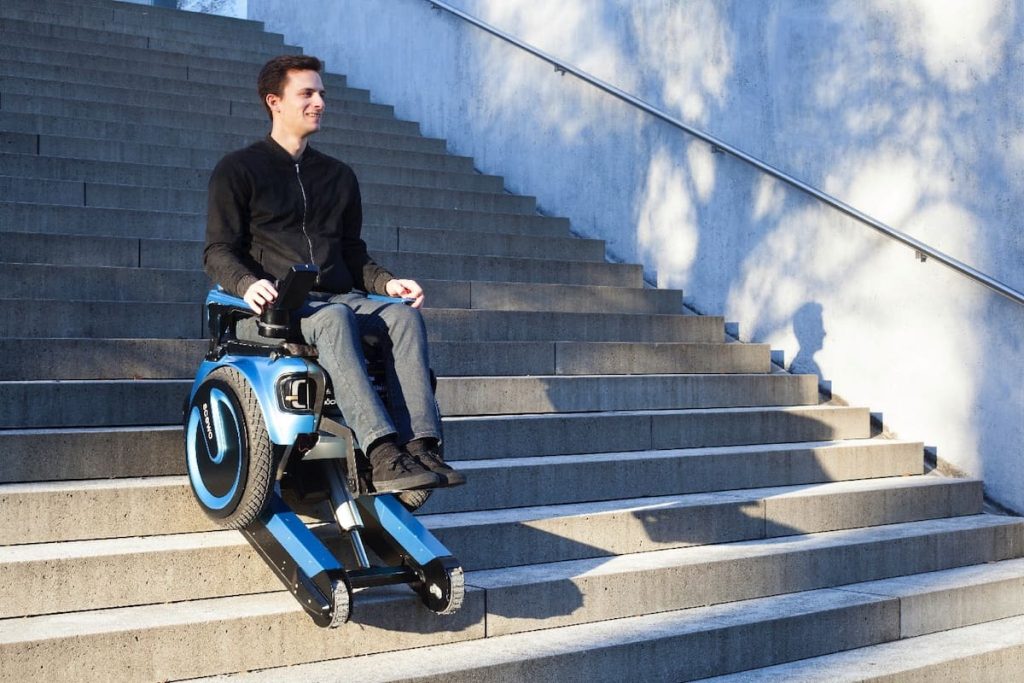
A wheelchair with stair-climbing capabilities, commonly called a stair climber or stair-assist wheelchair, is a specialized mobility aid for ascending stairs and incline surfaces.
- Intelligent Stair Climbing Technology: In places where stairs would ordinarily be a barrier to movement, these wheelchairs frequently have motorized systems that can safely and smoothly ascend or descend steps, increasing accessibility and independence for people.
- Robust Construction: The stair climbing wheelchair boasts sturdy and durable construction, ensuring stability and reliability during stair traversal, providing users with a secure and confident mobility experience.
Wheelchairs Under Power
Following are the types of power wheelchairs:
Electric Wheelchairs
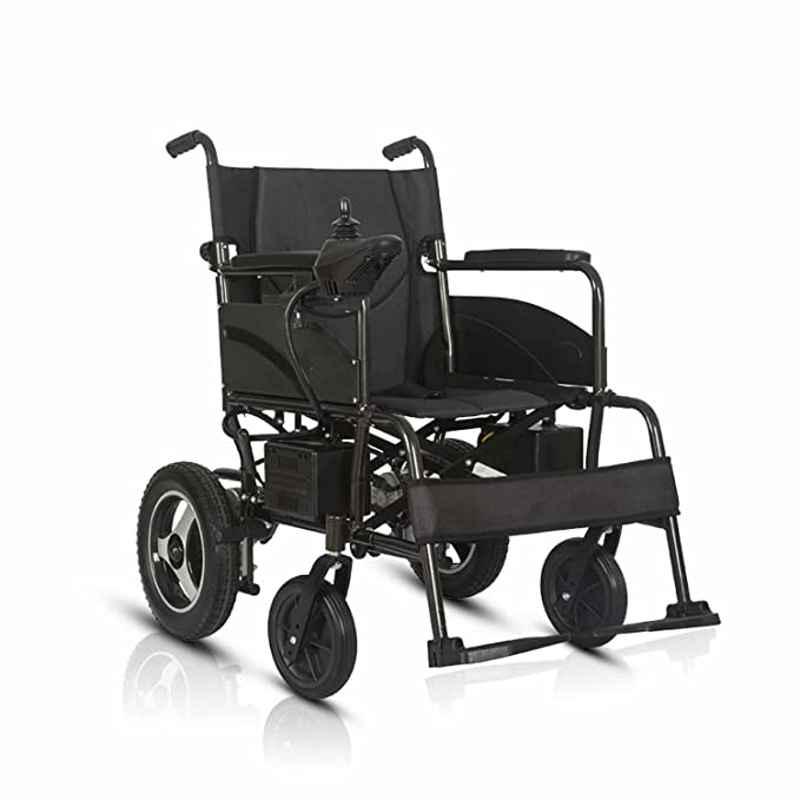
A motorized wheelchair, often called an electric wheelchair, provides powered movement to people with low physical strength or mobility issues.
Simplified Control and Versatile Maneuverability: These wheelchairs have electric motors and battery systems that simplify mobility and control. Electric wheelchairs can be controlled by a joystick or other devices by the user.
Enhanced Mobility and Quality of Life: They provide greater independence, comfort, and adaptability when traveling longer distances and different terrains. For people wishing to improve their quality of life and mobility, electric wheelchairs can be an excellent tool.
Diverse Features: They are available in various models and offer features like changeable seating positions, customizable settings, and exceptional safety measures.
Group 3 Power Wheelchairs
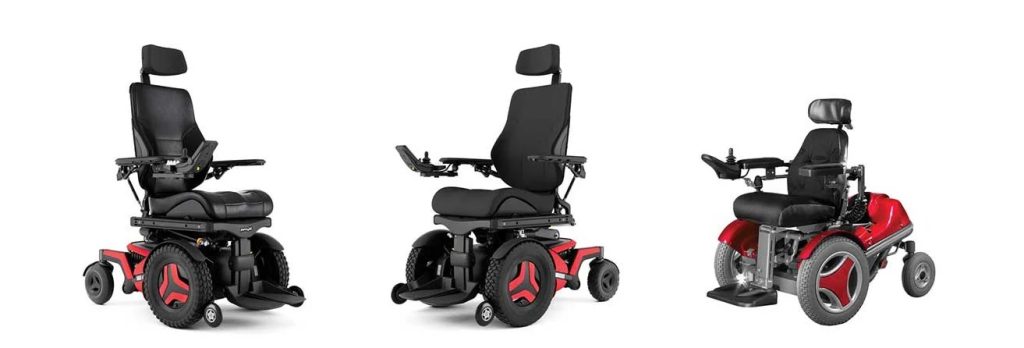
According to the guidelines established by the CMS, i.e., Centres for Medicare and Medicaid Services in the United States, a Group 3 power wheelchair is a particular categorization of motorized wheelchairs.
Elevates Mobility Solutions: Group 3 power wheelchairs offer cutting-edge features for those with more sophisticated mobility needs.
Advanced Comfort and Maneuverability: For increased comfort and maneuverability, these wheelchairs frequently offer higher weight capacities, improved seating and positioning options, programmable controls, and sophisticated suspension systems.
Empowers support: Power wheelchairs in Group 3 offer higher capability and support to suit people with severe medical issues or mobility disabilities.
Lightweight Wheelchairs
A lightweight power wheelchair combines a lightweight design’s portability and maneuverability with a power-driven mobility aid’s ease of use and convenience.
Enhanced Functionality: These wheelchairs are lighter than standard power wheelchairs and are made to be portable. They have lightweight materials, folding mechanisms, and minor frames without compromising performance or functionality.
Ease of Storage and Transport: They are the ideal choice for people who require a motorized wheelchair but also need the freedom to move or fit through tight spaces because they are easy to store, handle, and transport due to their lightweight construction.
Offers flexibility and comfort: These wheelchairs give users flexibility and convenience, enabling them to retain an active way of life with improved mobility.
Folding/Portable Wheelchairs
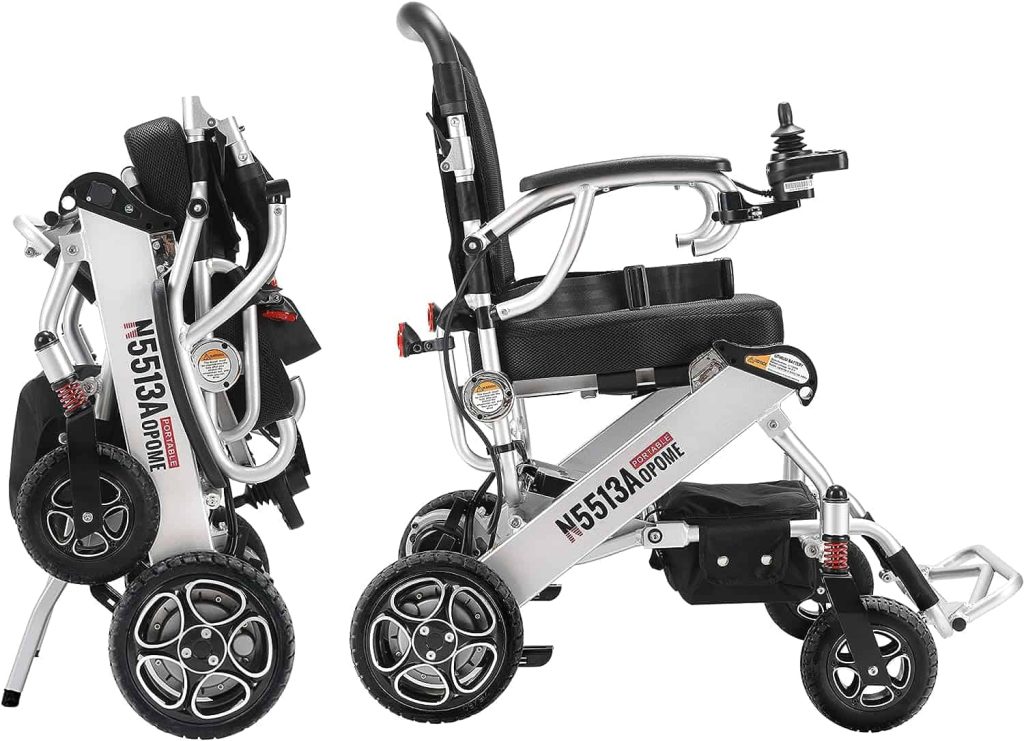
A foldable or portable wheelchair is a mobility aid that may be quickly folded or disassembled for easy storage and transportation.
Portable and easy storage: These wheelchairs include foldable frames or detachable parts, making them portable and light when folded. For people who frequently travel or have little storage space, portable wheelchairs are perfect. They are made to travel readily in vehicles, aircraft, or other means of transportation.
Foldable Convenience: These wheelchairs are foldable but preserve structural integrity and offer equivalent comfort and functionality to non-foldable ones. For users who are constantly moving, portable wheelchairs provide convenience and flexibility.
Outdoor Wheelchairs
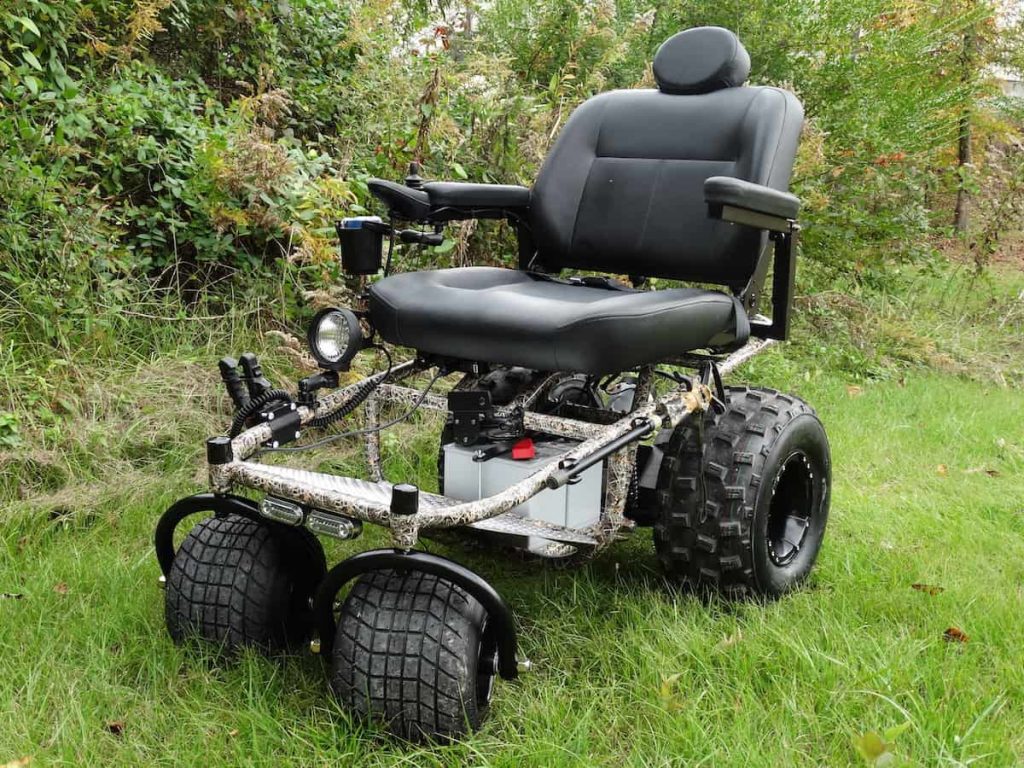
An outdoor wheelchair sometimes referred to as an all-terrain wheelchair or an off-road wheelchair, is made to offer accessibility and mobility in outside settings.
Allows Off-Road Adventure: These wheelchairs have rigid frames, larger wheels with improved traction, and robust components to negotiate uneven roads, gravel paths, grassy terrain, and other outdoor challenges. They enable a smooth and comfortable ride by providing stability, maneuverability, and shock absorption.
Versatile Features: To accommodate a variety of outdoor activities, outdoor wheelchairs frequently include extra features, including strengthened frames, adjustable suspension, and specialized seating options. This allows users to explore the outdoors, participate in outdoor activities, and go on adventures.
Heavy-Duty Wheelchairs
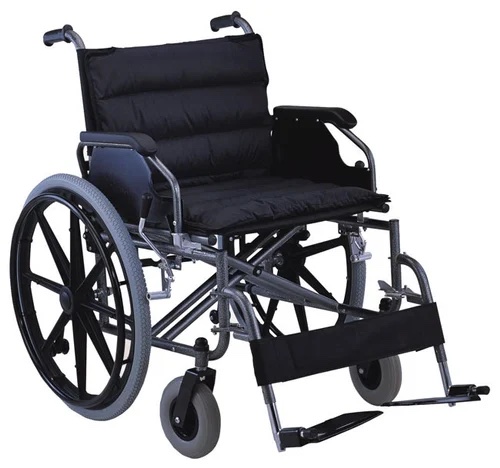
A heavy-duty power wheelchair is a durable and strengthened motorized wheelchair that assists those who weigh more or need more stability and support.
Highly durable: These power wheelchairs are built to withstand the demands of bigger riders and rugged terrain. They also include solid engines and improved suspension systems.
Advanced Seating and Versatility: Compared to regular power wheelchairs, they include more sophisticated seating options, changeable layouts, and a higher weight capacity.
The idea for everyday use: Individuals who use heavy-duty motorized wheelchairs benefit from increased mobility, comfort, and independence, making it easier to move around their daily lives and outdoor settings.
You can also get grants for wheelchair vans from various government and NGO organizations.
Wheelchairs Under Transport
Following are the types of Transport wheelchairs:
Travel Chair Wheelchairs
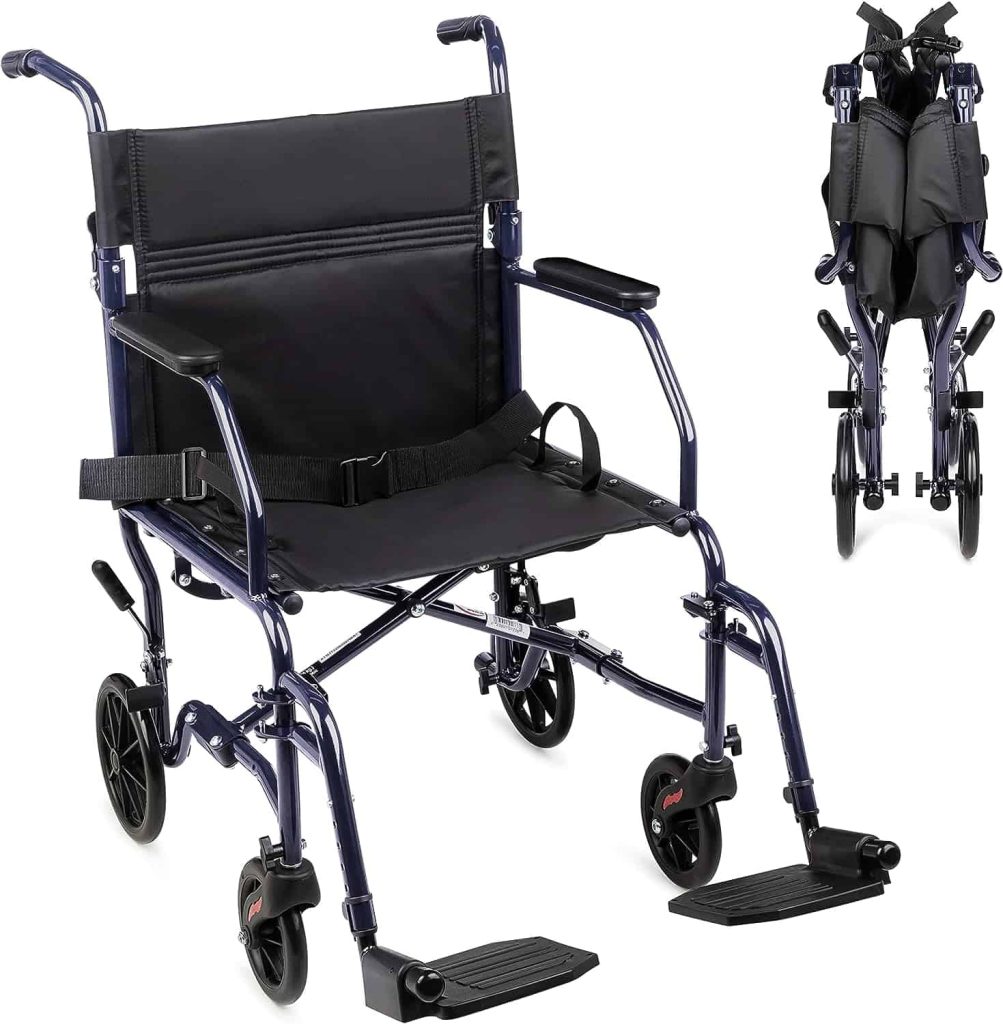
A Travel chair wheelchair is a mobility aid that is small and light enough to be easily transported with the help of a companion or carer.
- Simplicity and Portability: The portability and convenience of these wheelchairs, often called companion wheelchairs, are given priority. They are portable and have a small footprint, making them foldable and straightforward to store.
- Assisted Travel and Accessibility: Travel chair wheelchairs often don’t have hand rims and have smaller rear wheels because they are designed to be pushed by another person. They offer a valuable alternative for people with limited mobility who need support from a carer or partner when traveling or navigating various situations.
- Usage: These wheelchairs are perfect for short outings, medical visits, or indoor use.
Heavy-Duty Wheelchairs
A sturdy and strengthened mobility aid called a heavy-duty transport wheelchair is made to transport people who weigh more safely.
- Strength and Stability in Transit: These wheelchairs are designed primarily to carry bigger weights and offer improved stability and durability while in transit. They differ from conventional transport wheelchairs because they have a strong frame, strengthened components, and a more extensive weight capability.
- Greater user safety and comfort: Wider seat widths, stronger brakes, and additional support elements are commonly found in heavy-duty wheelchairs to improve the user’s safety and comfort.
- Usage: These wheelchairs are widely used in hospitals, airports, and other places where it is necessary to transport persons who require additional weight safely and dependably.
Other Types of Wheelchairs
In addition to the well-known forms of wheelchairs, several specialized models are available to meet particular needs and preferences and provide distinctive features and capabilities for increased mobility and independence. Let’s go through them:
3 Wheeled Wheelchairs
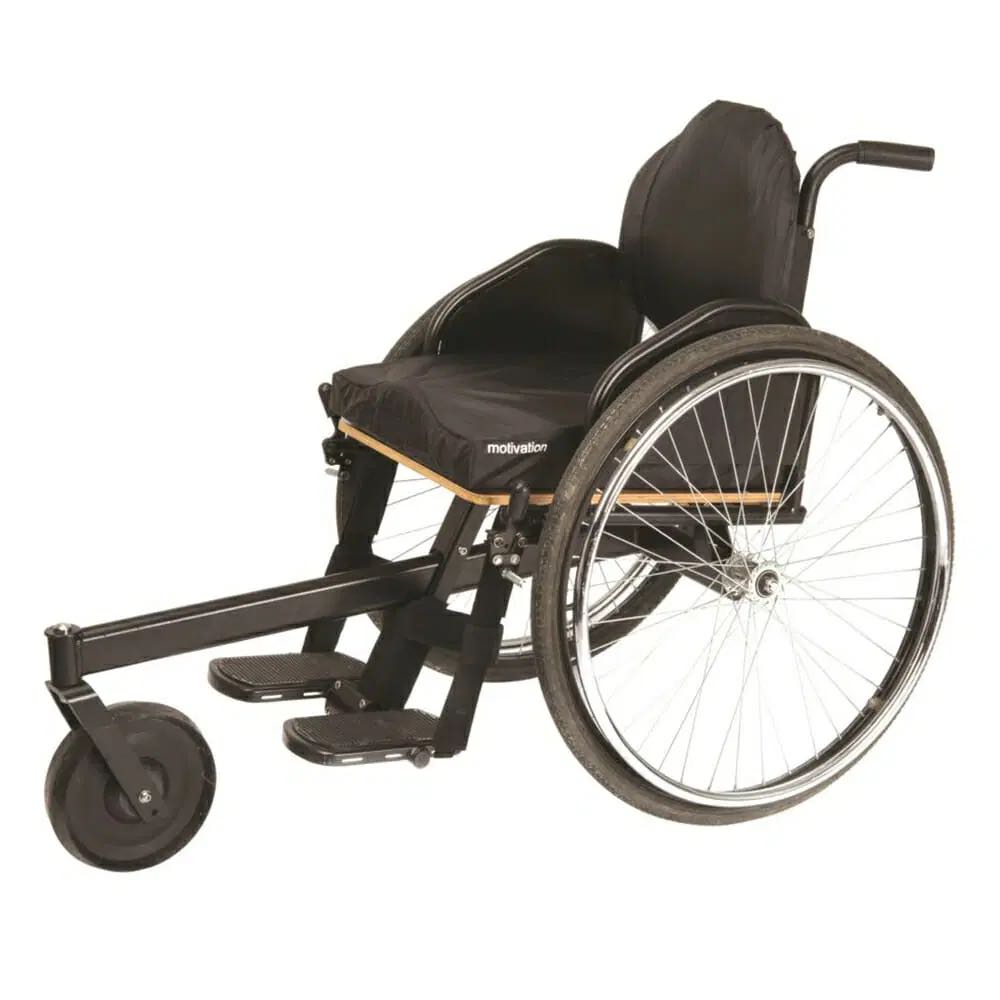
Three-wheeled wheelchairs, often tricycles or trikes, have one wheel at the front and two at the back. This arrangement gives more stability and maneuverability than standard wheelchairs.
- Agility in Tight Spaces: Wheelchairs with three wheels are especially useful for navigating confined spaces, interior settings, and urban regions. They have a lower turning radius, making maneuvering around obstacles and corners more straightforward.
- Personalized Comfort and Flexibility: These wheelchairs frequently have changeable seating positions, ergonomic designs, and different customization choices to meet customers’ unique requirements and desires for a more flexible and agile mobility solution.
Dog Wheelchairs
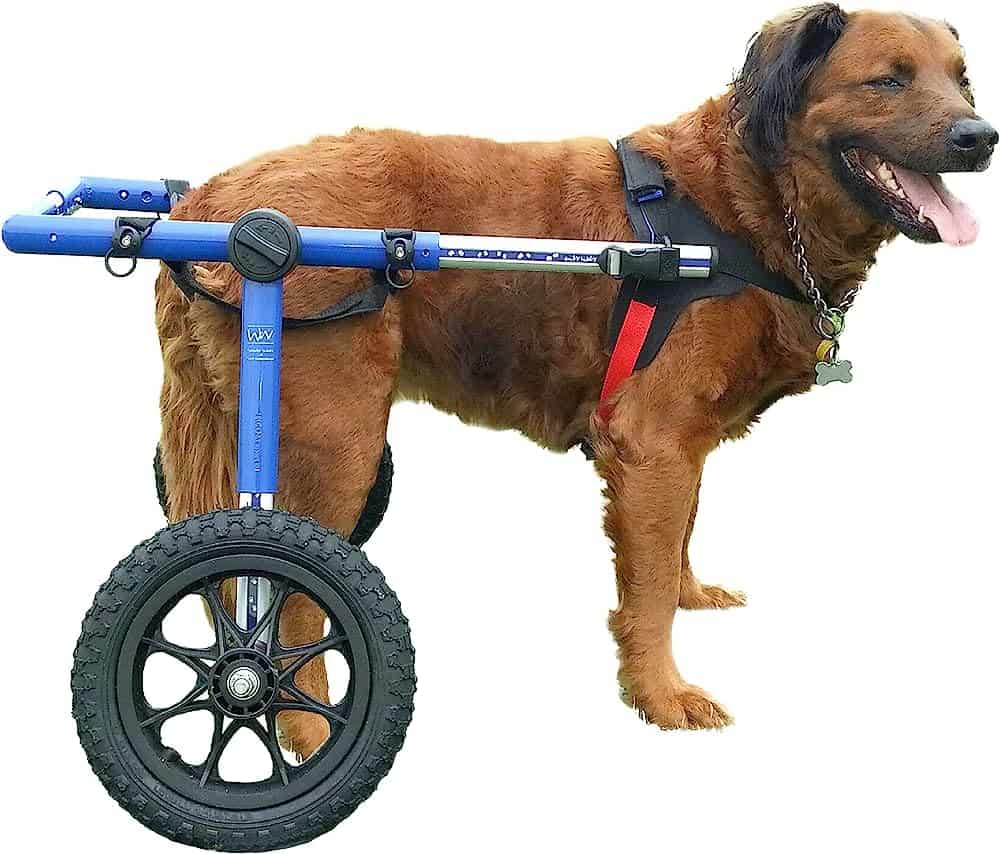
The specialized equipment known as dog wheelchairs, often referred to as doggie carts or dog mobility aids, is made to accommodate dogs who have mobility issues.
- Enhanced Movement: These canine wheelchairs help dogs with injuries, paralysis, or weakness in their rear limbs regain movement and lead active lives.
- Specially Crafted Support: The majority of dog wheelchairs are made comprised of a sturdy frame and wheels that support the dog’s back legs while enabling its front legs to move freely. They can be altered to fit many sizes and kinds of dogs.
- Improved Well-being: Dog wheelchairs allow dogs to go on adventures, exercise, and participate in daily activities, improving their general health and quality of life.
Standing Wheelchairs
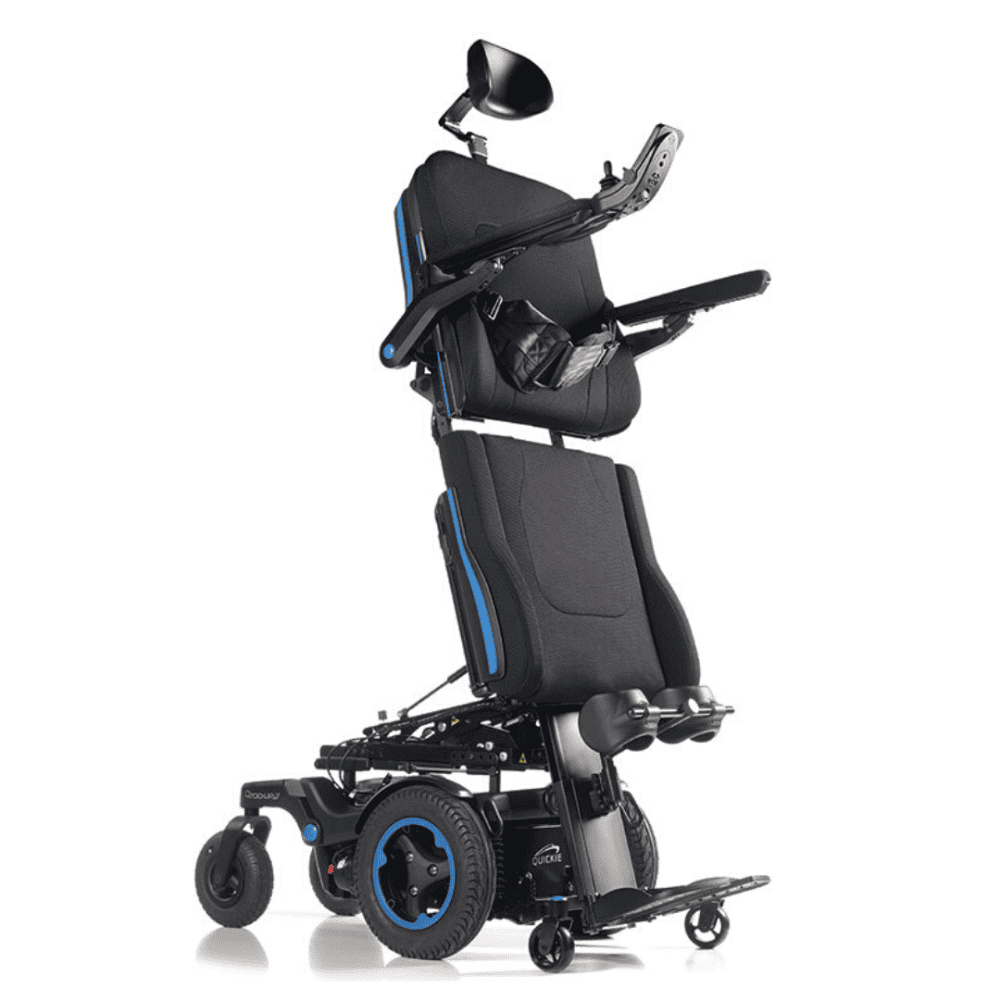
Standing wheelchairs, sometimes called stand-up wheelchairs or standing power wheelchairs, are advanced transportation options that let people with limited mobility stand up.
- Elevates Independence and Health: These powered wheelchairs offer several physical and psychological advantages by lifting the user from a seated to an upright standing posture. Improved circulation, bone density, digestion, and respiratory function are all benefits of standing wheelchairs.
- Enhanced Interaction and Activity: By enabling users to converse with others at eye level and perform various activities while standing upright, they also offer social and psychological benefits. With standing wheelchairs, people can enjoy the multiple advantages of standing, improving their general health and quality of life.
Mobility Wheelchairs
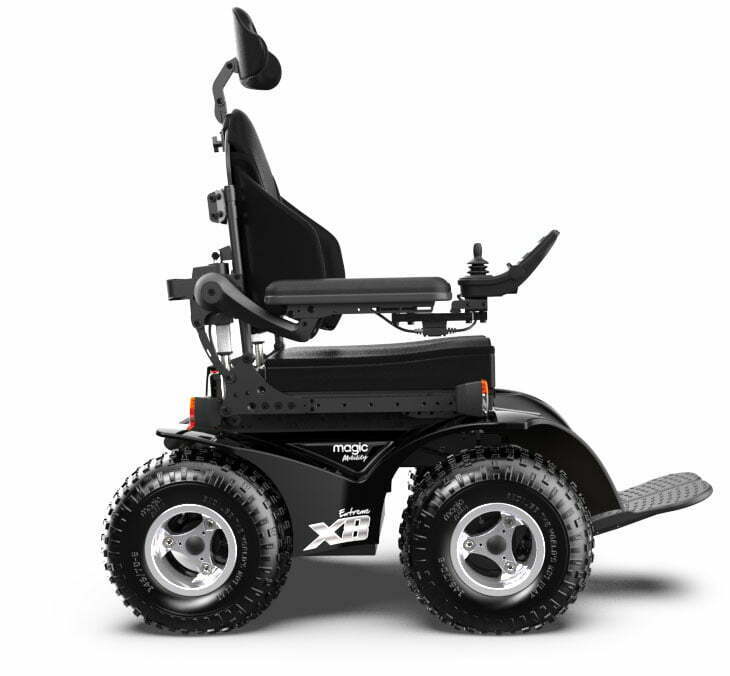
Mobility wheelchairs, often known as mobility scooters, are electrically propelled tools to help people with limited mobility carry out daily tasks.
- Effortless Mobility and Comfort: Users of these wheelchairs can quickly move through both indoor and outdoor areas while providing a comfortable and convenient mode of mobility. A stable base, handlebars or a tiller for steering, and a cozy seating space are common characteristics of mobility wheelchairs.
- Power and Accessibility: They are an excellent alternative for people who need assistance traveling over longer distances or through rugged terrain because they come with battery-powered motors that move the wheelchair ahead.
Factors to consider before choosing the suitable wheelchair
Selecting the ideal wheelchair is a critical choice that necessitates consideration of several criteria to guarantee the user’s maximum comfort, functionality, and freedom. Before choosing, keep the following essential things in mind:
- Mobility Needs: Determine the person’s unique mobility needs, such as if they require a wheelchair for interior or outdoor use, carer assistance, or the ability to maneuver over different terrains.
- Body Dimensions: To ensure a correctly fitting wheelchair that provides appropriate support and avoids discomfort or pressure sores, consider the user’s height, weight, and body proportions.
- Seat Comfort: Examine the wheelchair’s backrest, armrests, and seat padding for adequate support and comfort during prolonged durations of sitting.
- Maneuverability: If going through small entrances or cramped spaces is required, consider the wheelchair’s turning radius, overall size, and maneuverability.
- Portability: Determine whether the wheelchair needs to be lightweight or easily collapsible for practical transit and storage, particularly for frequent travel or limited storage space.
- Adjustability and Customization: To meet individual preferences and offer the best positioning and comfort, look for wheelchairs with adjustable features, such as seat height, armrest height, and footrest positioning.
- Safety elements: To assure the user’s safety and stability, look for essential safety elements such as dependable brakes, anti-tipping devices, and secure sitting attachments.
- Professional advice: Seek the advice of medical professionals or mobility specialists who can offer professional direction and suggestions depending on the user’s unique needs and circumstances.
Check door width before make purchasing any wheelchair because it has to be accessible from any type of door width. You can check the minimum door width for a wheelchair to access.
FAQs
A power wheelchair or a manual wheelchair with power-assist features may be more appropriate for you if you have limited upper body strength to ensure comfortable and independent mobility.
Wheelchairs are frequently covered by insurance. Speaking with your insurance company about the coverage, requirements, and supporting evidence needed for reimbursement is crucial.
It is advised to have your wheelchair serviced once a year or as the manufacturer specifies. Your wheelchair will operate at its best and be safe and long-lasting with routine maintenance.
Most airlines provide for wheelchair users and have guidelines for transporting them. To learn about the requirements and processes for flying with a wheelchair, speak with your airline in advance.
Conclusion
Wheelchairs symbolize freedom and power for people with limited mobility and as mobility aids. Wheelchairs are available in various styles, from manual to powered, lightweight to heavy-duty, to accommodate different needs and tastes. Careful thought must be given to mobility needs, comfort, maneuverability, and safety features while selecting a wheelchair. People can reclaim their freedom, travel confidently, and engage in daily activities without restrictions by choosing a suitable wheelchair. Wheelchairs accurately represent inclusivity because they encourage equality and guarantee that everyone can enjoy life to the fullest, despite any physical limits.

John, a compassionate blog writer, empowers disabled travellers with articles and curated accessories, fostering inclusivity for an accessible world.
